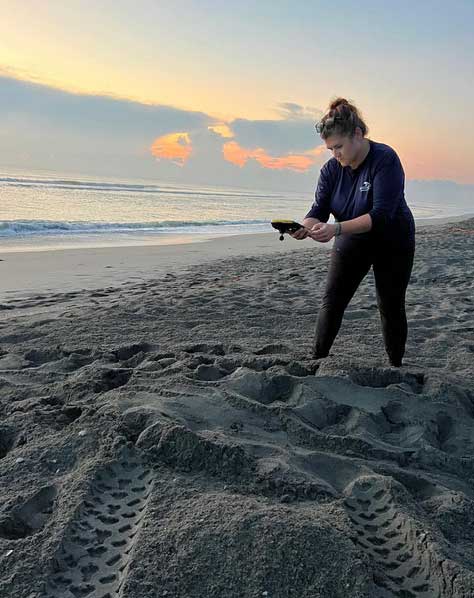Grant: 23-031C
Project Title: Global positioning system units for Loggerhead Marinelife Center's nesting beach monitoring
Project Manager: Justin Perrault
Organization: Loggerhead Marinelife Center (Non-Profit Organization)
Grant Amount: $11,450.00
Completion Date: 2023-10-12
Summary: The Research Department at Loggerhead Marinelife Center (LMC) monitors 15 km of nesting beach in northern Palm Beach County, Florida, and documents nearly 16,000 sea turtle nests, on average, of three species annually. Our local beaches are a globally important nesting beach for loggerheads and serve as part of Florida Fish and Wildlife Conservation Commission's Index Nesting Beach Survey (INBS), Statewide Nesting Beach Survey (SNBS), and/or Nest Productivity Assessment (NPA) programs. We document all sea turtle nesting and non-nesting emergences using sub-meter accuracy global positioning systems (GPS) and mark a significant portion of these nests for assessment of reproductive success. The accuracy of this equipment is required due our high nesting density (~1 nest/meter), which comes at an increased cost in comparison to other less precise units. The GPS units that we currently use are no longer being produced and the software associated with them has become obsolete, requiring us to replace each unit for the 2023 nesting season. During peak nesting season, we have up to six surveyors on the beach; therefore, seven GPS units (six in the field + one backup unit) are required to fulfill our nesting beach monitoring requirements. This project will purchase two Trimble TDC650-SM GPS units and the associated TerraFlex software subscription for each unit. Loggerhead Marinelife Center will cover the costs of the remaining units needed for our surveys as matching funds. We expect that these GPS units will be viable for up to five nesting seasons. Results: LMC purchased seven Trimble650-SM GPS units, two of them fully funded by the Sea Turtle Grants Program. These GPS units were integrated into our daily nesting surveys for the 2023 season and will be used for subsequent nesting seasons until the units are no longer functional (typically after 4-5 years). These units allowed us to document every nesting sea turtle activity on our local beaches (>25,000 total sea turtle nests in 2023) and monitor marked nests for reproductive success.
Results: LMC purchased seven Trimble650-SM GPS units, two of them fully funded by the Sea Turtle Grants Program. These GPS units were integrated into our daily nesting surveys for the 2023 season and will be used for subsequent nesting seasons until the units are no longer functional (typically after 4-5 years). These units allowed us to document every nesting sea turtle activity on our local beaches (>25,000 total sea turtle nests in 2023) and monitor marked nests for reproductive success.